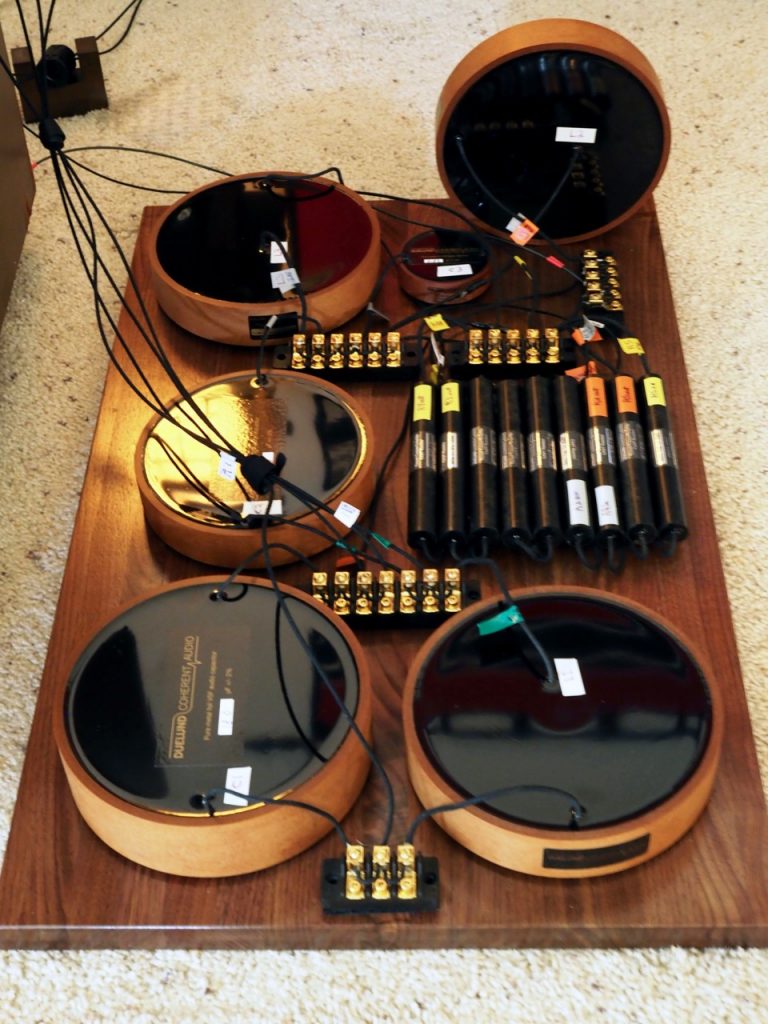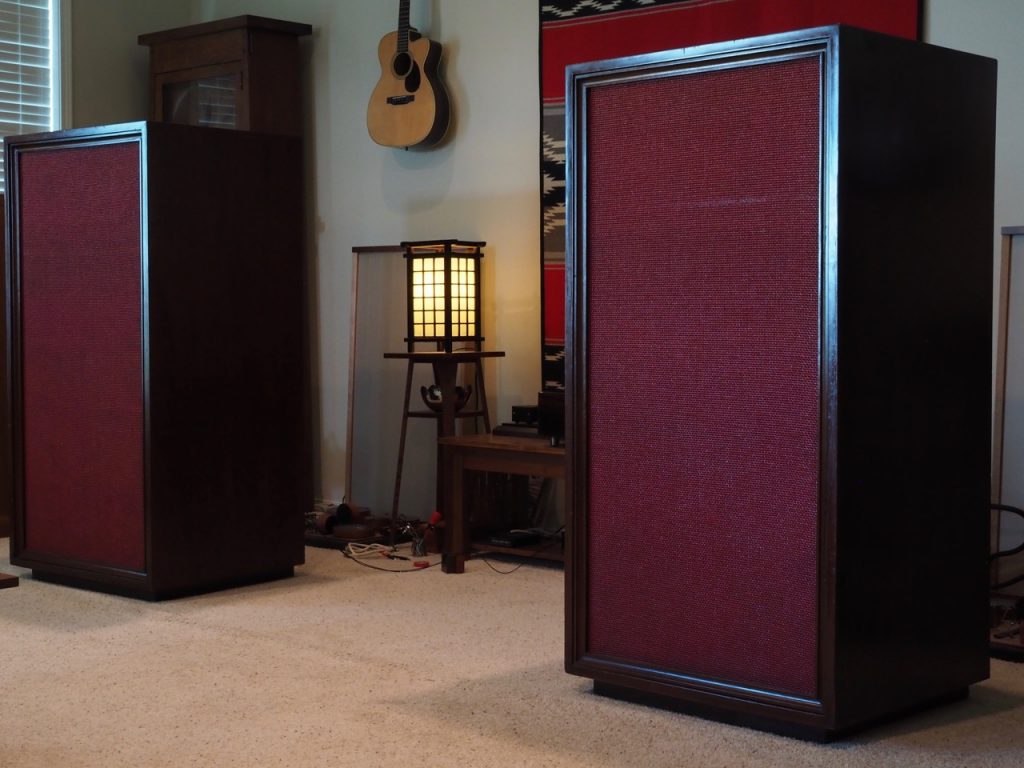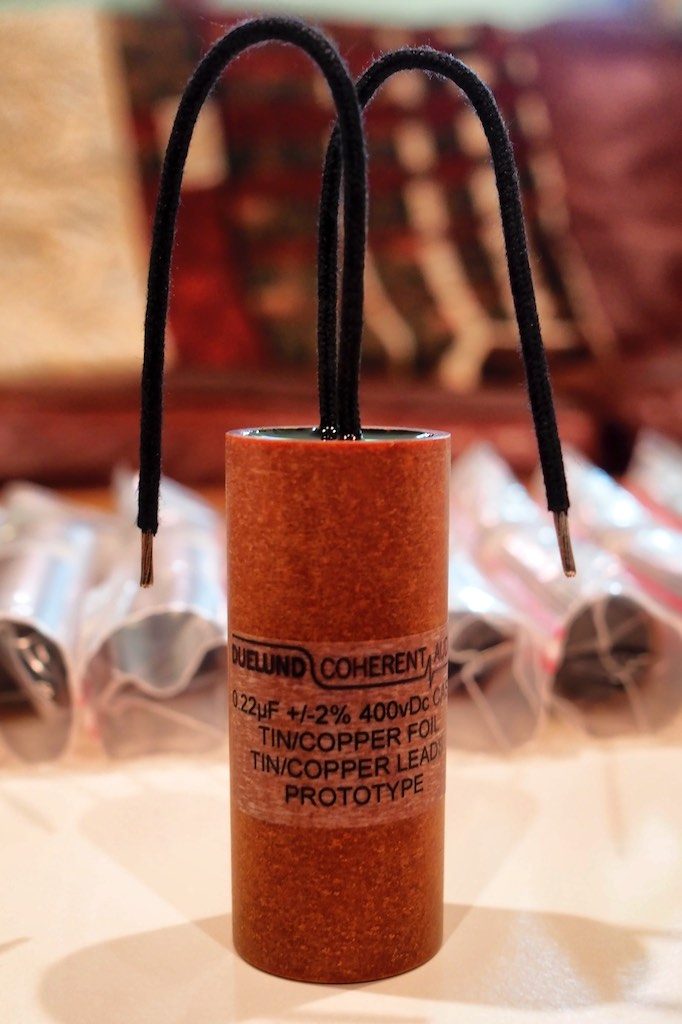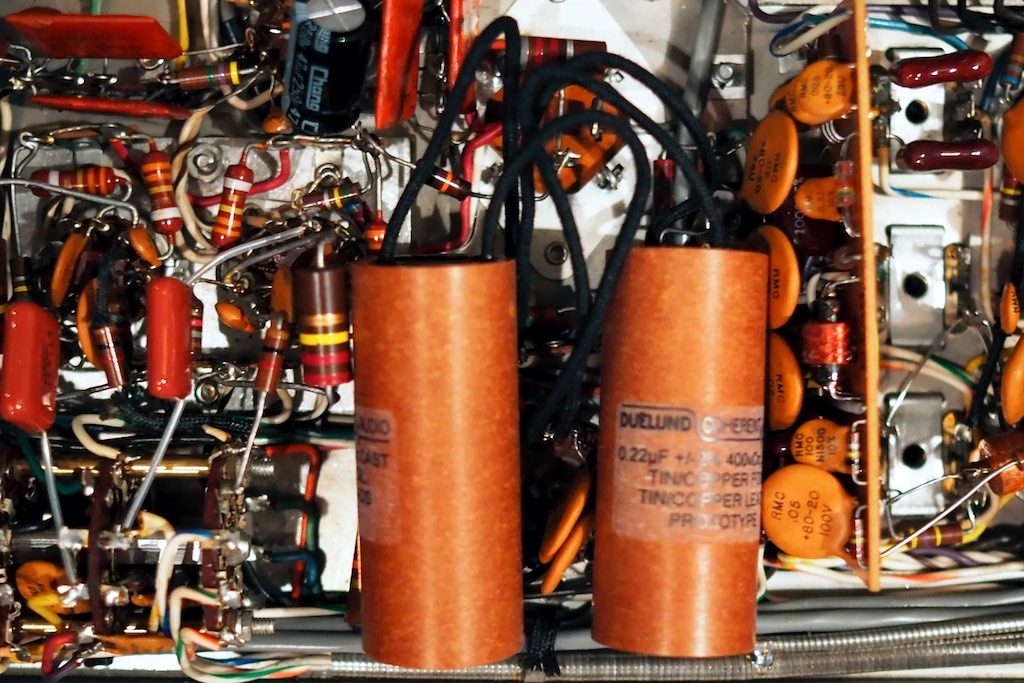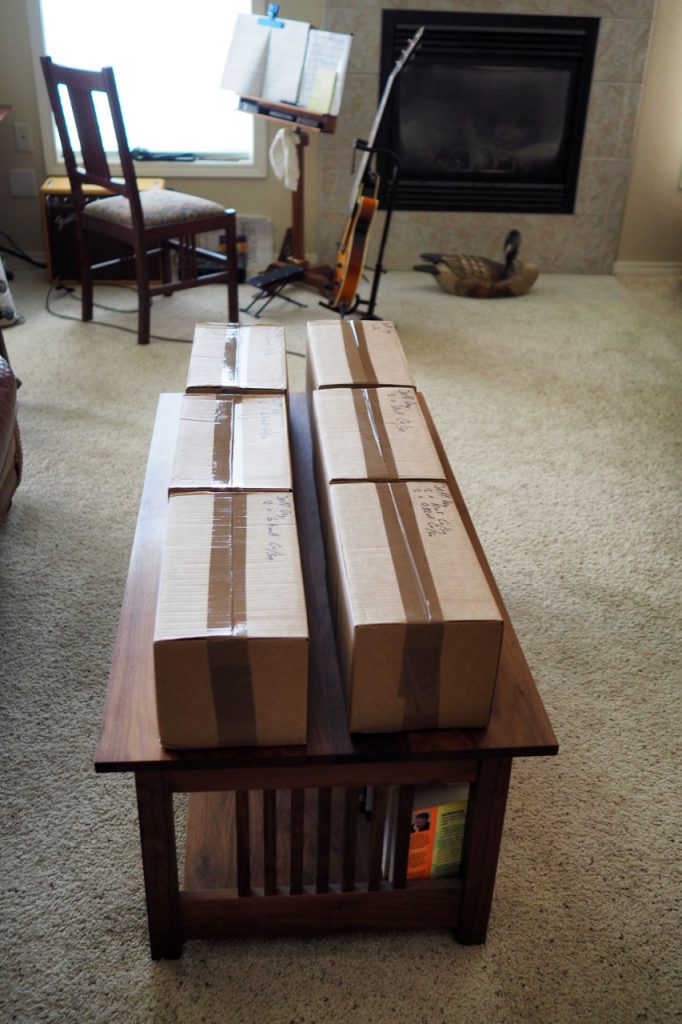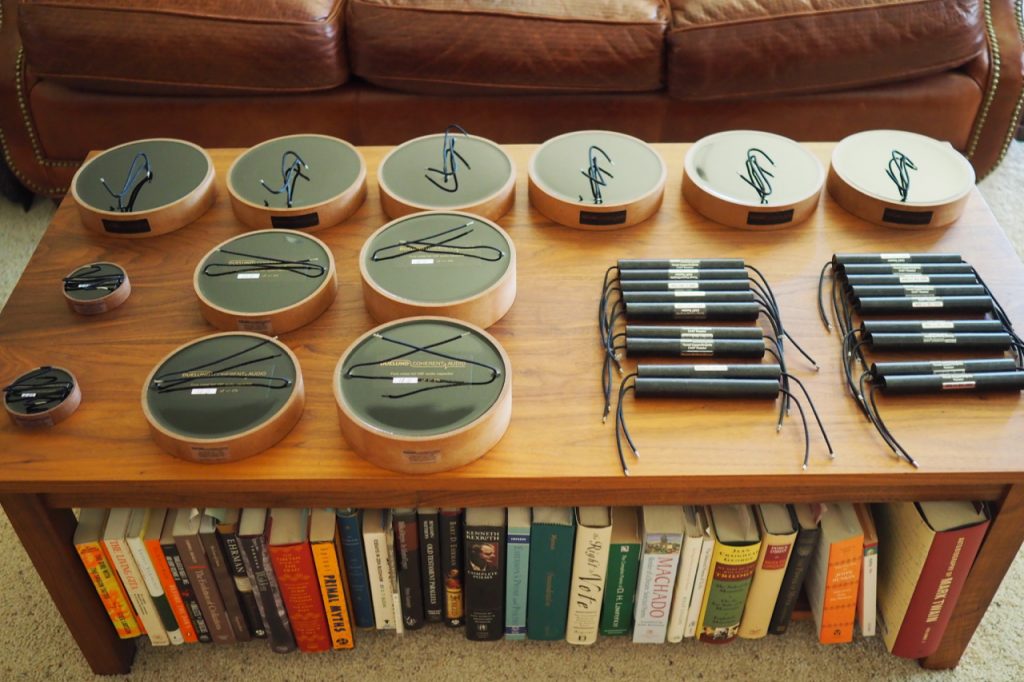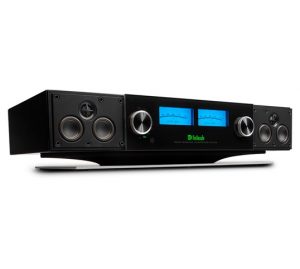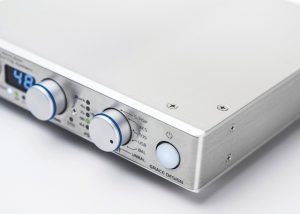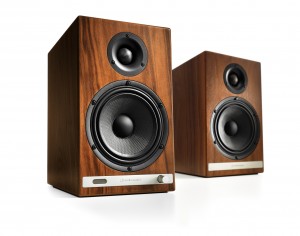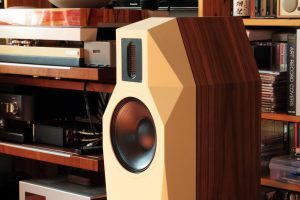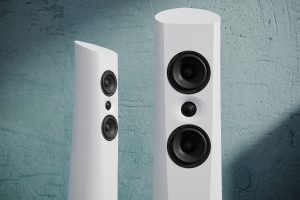This particular feature article for Positive Feedback isn't your typical audio review, but rather is intended to be a fun and inspirational "dare to dream" article that is decidedly outside of the usual audio mainstream.
This is an article that tells the story of the successful marriage of the latest state-of-art Duelund Coherent Audio CAST tinned-copper capacitors, inductors, and resistors—in a Jean Hiraga inspired crossover circuit (photo below)—with the historically important vintage Altec loudspeakers that were custom made for the domestic use of conductor Leopold Stokowski in the early 1960s (hereinafter referred to as the "Stokowski" Altec's).
The resulting combination of the state-of-art Duelund CAST tinned-copper components with the early 1960s custom vintage Altec loudspeakers (photo below) has completely reset my expectations for what is possible for loudspeaker performance in terms of musicality, live-like musical realism, emotional impact, and the natural presentation of imaging, soundstage, sense of recorded acoustic, as well as the other visuospatial artifacts of the recording process.
Honestly, I can't think of any crossover-loudspeaker combination I'd rather own at any price that is available on the market today—I've enjoyed the results of Duelund-Altec Project that much!
I am sorry to inform you that these are custom one-off vintage Altec loudspeakers and you can't buy a pair of them. However, you could build—or have built for you—a very close analog to the "Stokowski" Altec's should you be inspired to do that, but let me give you fair warning that in real-world terms it would be relatively expensive to do so.
After having lived with the Duelund-Altec Project loudspeakers for a while now, I can tell you that even though the cost of duplicating them would be relatively expensive, if your tastes and musical priorities run similar to mine, I think you would find the result to be eminently satisfying, the money well-spent, and likely they would be the last pair of loudspeakers that you would ever want to own.
As you read along you'll notice that I'll be heaping superlative upon superlative upon the combination of the Duelund CAST tinned-copper crossovers and the vintage "Stokowski" Altec's, and often their combined performance was so impressive for what I value most in music reproduction that I was at a complete loss of words to fully articulate what I was hearing and feeling as I listened to music with them. They're that remarkable of a combination, and are so intoxicating to listen to music with, that at times I'm just astonished at what I'm hearing and feeling!
The good news is that the Duelund Coherent Audio CAST tinned-copper capacitors, inductors, and resistors that were used in the Duelund-Altec Project are readily available now for any loudspeaker crossover project you might be considering.
Keep in mind that they are custom Duelund orders, so be sure to allow plenty of time for your order to be built, because every single component is completely hand-crafted by real people instead of automated machines, and it takes a fair amount of time and labor to build them.
The Duelund CAST Tinned-Copper Capacitors, Inductors, and Resistors
The first question you might be wondering about is, "Why tinned-copper?"
To help answer that question, please allow me to refer you to an excerpt from my 2017 Positive Feedback article An Adventure in the Art of Tone with the Duelund Coherent Audio DCA Series of Tinned-Copper Cables, Part 1, where I said:
"Back in 1950's America tinned-copper cables were routinely used in industrial applications, because electroplating copper conductors with tin prevented corrosion and improved their stripability, which made for an altogether more durable & reliable cable for industrial use.
Corrosion was an issue back in the 1950s because the common insulators of the day released sulfur peroxide as they decayed over time, which would then react with the copper conductors to form copper sulfide, which degraded the cables' performance and durability, and eventually necessitated replacing them.
However, with tinned-copper wire, the sulfur peroxide released from the insulators couldn't degrade the copper by forming copper sulfide, thus protecting the performance characteristics and the durability of the cables, and giving them a much longer service life.
Another factor was that for the shielded cables of the 1950s, the composition of the shielding made it difficult to strip away from bare copper conductors, so tinned-copper conductors were used, as they were easier to field-strip in preparation for use, making life easier for cable installation into industrial applications or commercial products.
So, the origin of tinned-copper cables was related to the purely practical reasons of preventing corrosion and easing stripability, making the wire more durable, reliable, and easy to handle in industrial and commercial applications.
Of particular interest to musicians and audio enthusiasts will be the use of tinned-copper conductors in vintage electric guitars and their amplifiers, and in vintage audio equipment.
Certain vintage electric guitar voices are forever etched into our minds from the music of Chuck Berry (Gibson ES 350), Eric Clapton ('Blackie' Stratocaster), Keith Richards ('Micawber' Telecaster), and Neil Young ('Old Black' Gibson Les Paul), for a few examples.
The electric guitar guys like to use the term 'vintage tone' to describe the tonal properties of certain vintage electric guitars and their amplifiers, like the 1957 Gibson ES 350 or Les Paul, the 1954 Fender Stratocaster, the 1950 Fender Telecaster, along with the Fender Deluxe Reverb (think Roy Buchanan) or the Marshall JTM 45 Combo (think Clapton), as a few examples.
As you would expect, electric guitar musicians have noticed the difference in the tonal qualities and musicality of the vintage vs. contemporary electric guitars and their amplifiers, and as far as quite a few electric guitar musicians were concerned, those differences in tone & musicality were not for the better.
In an effort to duplicate those now rare & expensive vintage electric guitars' tone, the electric guitar guys examined vintage electric guitars and their amplifiers and found that there were certain internal components (as well as the vacuum tube amplification, of course) that contributed to the 'vintage tone' of those great electric guitars and their amplifiers, like tinned-copper wire, or certain vintage capacitors like Black Beauties or Bumblebees, or Allen Bradley carbon composition resistors, for example.
Tinned-copper cables & wires faded from the electric guitar and audio scenes for the same reason they did from industrial applications. It simply costs more money to use them in production products, so in an effort to keep costs down and make more money, tinned-copper got phased out over time as new insulators were developed that didn't corrode bare copper conductors, and new shielding materials were developed that made stripability over bare copper conductors a relative breeze.
Those new approaches for insulators & shielding meant that the tinned-copper conductors that were more expensive to manufacture faded from the scene, and the forces at penny-pinching companies buried them in the sands of time, largely erasing them from people's memories, until the electric guitar musicians figured out where the tone had gone.
After the electric guitar musician community figured out why the tone & musicality of the vintage gear was superior to the modern gear, a cottage industry arose offering re-wiring kits with tinned-copper pushback wire, exotic vintage capacitors like Black Beauties or Bumblebees, vintage-style pots, vintage-style pickups, and other vintage-style components that helped to restore the lost tone & musicality to contemporary electric guitars and their amplifiers.
This interest in 'vintage tone' was not lost upon the electric guitar industry, which responded by producing special edition guitars that more closely aligned in tone & musicality to their vintage ancestors."
Likewise, in a parallel audio universe, Mr. Shirokazu Yazaki, who has enjoyed being an audio hobbyist all his life, and a successful professional audio designer in Japan for over 40 years, found that in his vintage home audio system when he used vintage Western Electric WE16GA cable as speaker cables, and the old studio standard Belden 8402 microphone cables as interconnects, that his hifi had a much more 'real sound' tonally and musically, and if you guessed that the Western Electric WE16GA cable and Belden 8402 cable share tinned-copper conductors as a common element, you're exactly right.
Mr. Shirokazu Yazaki recommended that I try the vintage Western Electric WE16GA cable as speaker cables, and the old studio standard Belden 8402 microphone cables as interconnects, and sure enough I too thought the tinned-copper speaker cables and interconnects were better tonally and musically in my reference systems than the popular conductors used in contemporary audio, pure copper or silver.
I also began to notice that my vintage McIntosh electronics and vintage Altec loudspeakers used tinned-copper wiring internally, which partly accounted for their desirable "vintage tonal qualities".
As I began to write about my impressions of tinned-copper's tonally and musically adept nature it became so popular in certain enthusiast audio circles that the available stocks of the vintage Western Electric wire quickly sold out around the world.
The exceptional tone and musicality of tinned-copper wire/cables had now been rediscovered in both the world of electric guitars and in enthusiast audio.
Sometimes a bit of serendipity comes into play in audio, as it does in life generally, and that was certainly the case here, as Frederik Carøe at Duelund Coherent Audio in Denmark had been observing the wave of passion that had been generated by the now extinct Western Electric WE16GA in audio enthusiasts—an audio "shot heard around the world" as it were.
Frederik decided he should build a purist version of the highly desired Western Electric WE16GA cable and offer it to enthusiasts. The new Duelund DCA16GA tinned-copper cable that resulted was also enthusiastically embraced around the world, and it turned out to be even better tonally and musically than the vintage Western Electric cable that inspired it.
Over time the popular Duelund line of tinned-copper cables would expand to include a variety of gauges, as well as tinned-copper cables optimized for line level use, and 600V rated versions for use in the internal wiring of components or power cords.
Then a second bit of serendipity came into play, when Frederik deduced that if tinned-copper conductors displayed such superb tonality in audio cables, then it likely would produce similar benefits in capacitors as well.
In October of 2016—three years ago now—Frederick sent me some prototype 0.22uF Duelund CAST tinned-copper capacitors to try that he had just developed.
I had been doing a lot of 0.22uF capacitor evaluation adventures in the cathode follower of my vintage McIntosh MX110 tuner-preamplifier at that point in time, trying everything from classic Sprague Bumblebee capacitors, Mullard "Tropical Fish," Jupiter Red "Astron" type capacitors, Arizona Capacitors Red, Blue, and Green Cactus capacitors, etc., and they all had their own unique and desirable qualities as capacitors, as you would expect, as they're all really good capacitors.
Then I soldered in the prototype 0.22uF Duelund CAST tinned-copper capacitors from Frederik into the cathode follower of my MX110, and my world changed.
Not only did the prototype 0.22uF Duelund CAST tinned-copper capacitors easily outperform all other capacitors I had tried musically & sonically, they did it by such a large degree that it was shocking to hear.
The Duelund's weren't just a little better in my MX110, they were more like an order of magnitude better, and pretty soon my buddies were swapping out their MX110's cathode follower capacitors and installing the Duelund CAST tinned-copper capacitors too.
Also, quite a few of you with MX110s wrote me to tell me how impressed you were that replacing just two capacitors in the cathode follower of the MX110 with the Duelund's could make such a dramatic difference.
The new Duelund CAST tinned-copper capacitors were a revelation!
In a conversation with Frederick Carøe towards the end of 2017, I asked Frederik if he would be interested in doing another crossover project in the same sort of spirit as the Duelund-Westminster Project that we had collaborated so successfully on back in December of 2013—that dramatically improved the performance of my Westminster's—but this time utilizing his new Duelund CAST tinned-copper capacitors in crossovers for a very special set of historically important custom vintage loudspeakers, the aforementioned "Stokowski" Altec's.
Frederik liked the idea, and even suggested that we expand on it, and make all the components in the crossovers – capacitors, inductors, resistors, and even internal wiring – out of tinned-copper conductors.
It would be a World's First for crossovers to be made entirely of tinned-copper components and wiring, and on January 3, 2018 I announced the coming Duelund-Altec Project to the readers of Jeff's Place.
Frederik developed the following Duelund CAST tinned-copper components to incorporate into the 16 Ohm Hiraga-style circuit that would be used for the project crossovers:
- 6mH Duelund CAST tinned-copper inductors for use at L1, L2, and L3.
- 18uF Duelund CAST tinned-copper capacitors for use at C1.
- 10uF Duelund CAST tinned-copper capacitors for use at C2.
- 82uF Duelund CAST tinned-copper capacitors for use at C3.
- 140 Ohm 10W Duelund CAST resistors for use at R2.
- 24 Ohm 50W Duelund CAST resistors for use at R3 (comprised of five 4.8 Ohm 10W Duelund CAST resistors in series connection).
- 100 Ohm 10W Duelund CAST resistors for use at R4.
- 10 Ohm 20W Duelund CAST resistors for use at R5 (comprised of two 5 Ohm 10W Duelund CAST resistors in series connection).
The undertaking for Frederik to design and build this custom batch of Duelund CAST tinned-copper components for the Duelund-Altec Project was substantial, as at the time Frederik had not built tinned-copper foil capacitors of that magnitude, nor had Frederik yet made air core inductors with tinned-copper foils, and to complicate things further, the resistors to be used in the project were a totally new design as well!
During this design & build period, Frederik also built some Duelund CAST tinned-copper 100V capacitors that were optimized for use in loudspeaker crossovers for review at Humble Homemade HiFi.
I read the review with excitement as soon as I found out about it, as I was interested to find out if Humble Homemade HiFi had the same sort of reaction to the 100V Duelund CAST tinned-copper crossover capacitors as I did to the 400V prototype Duelund CAST tinned-copper capacitors I had installed in my MX110 preamplifier.
Humble Homemade HiFi reported on their tests of the new 100V Duelund CAST tinned-copper capacitors intended for use in crossovers on May 9, 2018, which you can read HERE (you'll have to scroll down the page a bit until you find the review).
Humble Homemade HiFi rates the capacitors in its reviews on a scale from 0 to 20 points, with better capacitors scoring 10 ± 3 points. The Duelund CAST tinned-copper capacitors scored 15 points, which is the highest rating ever achieved by a capacitor tested by Humble Homemade HiFi.
I was excited to read that the Humble Homemade HiFi's review of the 100V Duelund CAST tinned-copper crossover capacitors mirrored my reaction when hearing the 400V prototype Duelund CAST tinned-copper capacitors in my MX110, with Tony saying, "With the Duelund CAST Cu-Sn all types of music flow, become more involving, to such an extent that I was forgetting that I was testing capacitors—I haven't had that experience for years."
Reading Tony's report at Humble Homemade HiFi made me more excited than ever to build up the Duelund-Altec Project crossovers for the "Stokowski" Altec's using the new Duelund CAST tinned-copper capacitors, inductors, and resistors!
It took Frederik some time to work through all the details of building the full set of custom Duelund CAST tinned-copper capacitors, inductors, and resistors for the Duelund-Altec Project, but in a little less than 10 months Frederik had accomplished building the full set of components, and on September 24, 2018 it was a cause for celebration when the completed Duelund CAST tinned-copper components arrived here at Jeff's Place!
Kudos to you, Frederik, that was a courageous undertaking in component building, and thank you for making the Duelund-Altec Project possible by taking it from an inspired idea into the realm of an achievable project with your newly developed Duelund CAST tinned-copper components! Thank you!





